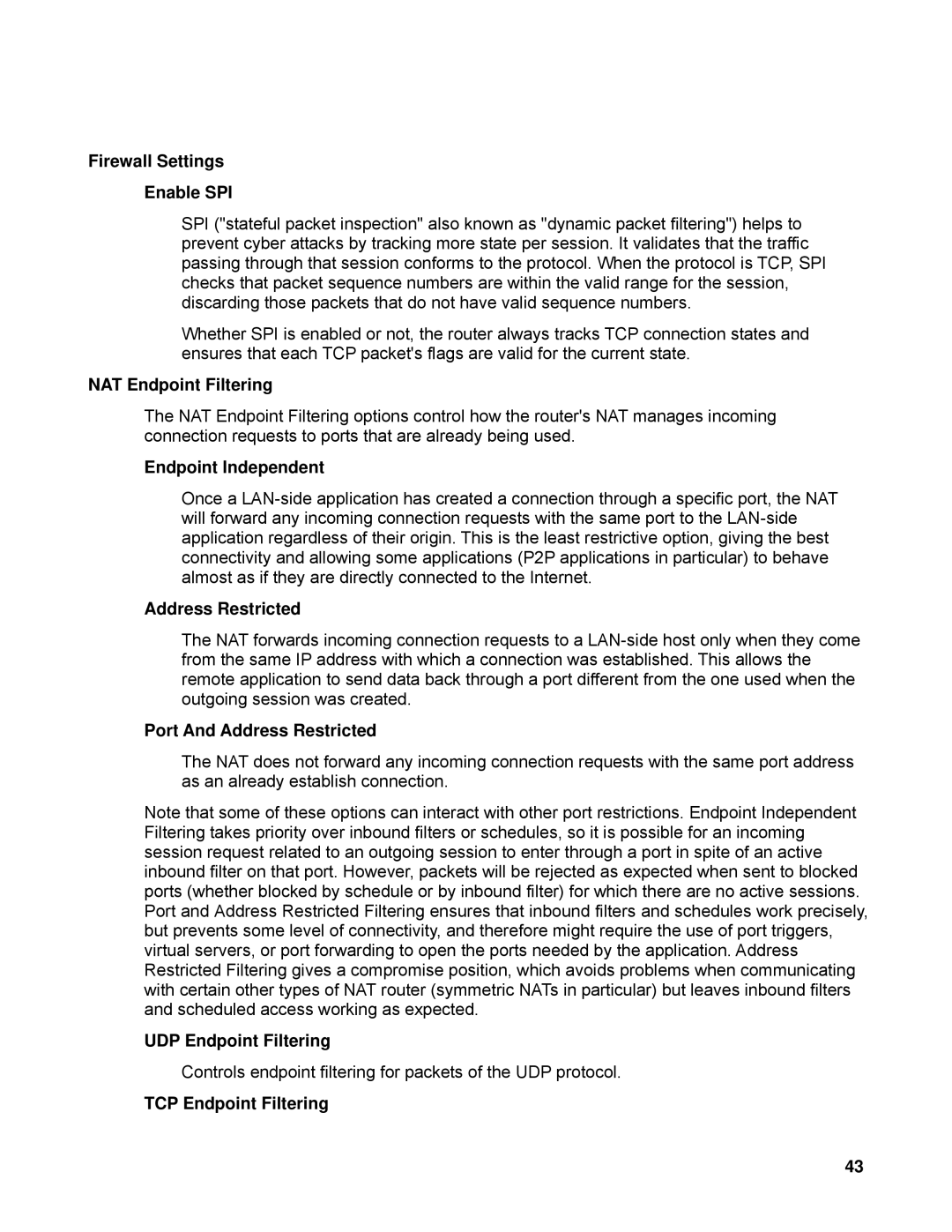Firewall Settings
Enable SPI
SPI ("stateful packet inspection" also known as "dynamic packet filtering") helps to prevent cyber attacks by tracking more state per session. It validates that the traffic passing through that session conforms to the protocol. When the protocol is TCP, SPI checks that packet sequence numbers are within the valid range for the session, discarding those packets that do not have valid sequence numbers.
Whether SPI is enabled or not, the router always tracks TCP connection states and ensures that each TCP packet's flags are valid for the current state.
NAT Endpoint Filtering
The NAT Endpoint Filtering options control how the router's NAT manages incoming connection requests to ports that are already being used.
Endpoint Independent
Once a
Address Restricted
The NAT forwards incoming connection requests to a
Port And Address Restricted
The NAT does not forward any incoming connection requests with the same port address as an already establish connection.
Note that some of these options can interact with other port restrictions. Endpoint Independent Filtering takes priority over inbound filters or schedules, so it is possible for an incoming session request related to an outgoing session to enter through a port in spite of an active inbound filter on that port. However, packets will be rejected as expected when sent to blocked ports (whether blocked by schedule or by inbound filter) for which there are no active sessions. Port and Address Restricted Filtering ensures that inbound filters and schedules work precisely, but prevents some level of connectivity, and therefore might require the use of port triggers, virtual servers, or port forwarding to open the ports needed by the application. Address Restricted Filtering gives a compromise position, which avoids problems when communicating with certain other types of NAT router (symmetric NATs in particular) but leaves inbound filters and scheduled access working as expected.
UDP Endpoint Filtering
Controls endpoint filtering for packets of the UDP protocol.
TCP Endpoint Filtering
43
